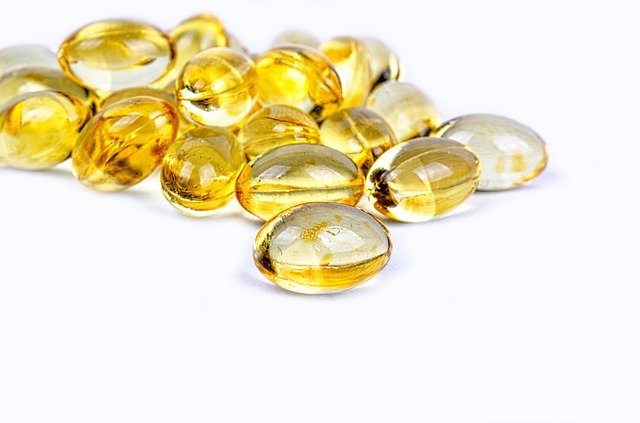Trying to avoid the flu this winter? Vitamin D can help! Here are specific steps you can take to manage your vitamin D levels and stay healthy.
It’s Flu Season Again
Ever wonder why people tend to get sick in winter? There are a lot of theories, including that we spend more time indoors and close to others. Another reason is that the flu virus can live longer outside of a “host” in the colder, dryer winter air.
You May Also Enjoy:
“15 Natural Antibiotic Alternatives”
But there’s another reason I believe also completes this puzzle of why the flu only seems to come out in winter: Vitamin D deficiency makes us more susceptible to viral attack (along with zinc deficiency, too).
Why Vitamin D Matters

Image by Shutterbug75 from Pixabay
Vitamin D is a steroid hormone (not really a vitamin) that our body creates when it is exposed to direct sunlight. It also comes from foods like pastured meats and eggs, liver, wild fish, sardines, and oysters. Most of us are already low or deficient in vitamin D because unlike our ancestors who lived outdoors, we live inside offices and Starbucks, and because few of us are eating the foods listed above. About 80% of my clients come into my office with vitamin D levels in the “deficient” range.
Those of us in the Northern Hemisphere above the 35th parallel likely produce little vitamin D in our bodies between October and March. I have not yet found a way to invent a computer screen that emits vitamin D-creating light (but if you steal my idea, I expect half the profits—honor system here, folks).
You May Also Enjoy:
“Hackberries: Nature’s Grape-Nuts for Winter Survival”
The vitamin D theory of the winter illnesses holds some water as evidenced by research from the National Institutes of Health, and perhaps most forcefully in a 2009 study published in JAMA. And it is now widely accepted that, regardless of the reason, sufficient levels of vitamin D help people fight acute respiratory infections, including those associated with colds and the flu.
Of course the naysayers have some studies suggesting vitamin D has no effect on your ability to fight the flu. After reviewing such research, it appears these studies only looked at the dosing, not the participants’ actual levels. You could give someone all the vitamin D in the world, but if it’s not raising their blood levels within an optimal range, the study results are not reliable.
So What Is an Optimal Level of Vitamin D?

Image by Mircea Ploscar from Pixabay
No one knows, and researchers are in a hot debate on this. There are basically two camps: the 35–50ers and the 50–70ers.
I’m in the camp of the 50–70ers, with some exceptions. That level should be achieved at least in part through sunlight and food rather than by supplementation. I know people who take mega-doses of refined vitamin D supplements for long periods of time to get that level, which I don’t recommend.
And there is some evidence that those dealing with very serious illnesses can benefit from extra high, therapeutic levels.
Learning From Traditional Lifestyles
I base this opinion in part on studies that look at the levels of those modern hunter-gatherers and societies that live outdoors most of the time—like we did more than 10,000 years ago. Studying people in traditional cultures that are relatively free from “Western” diseases is often a good way to know what may be optimal for the rest of us.
You May Also Enjoy:
“Planting Fruit Trees in Fall: 11 Tips for Success”
“Planting Fruit Trees from Seed: What About Chill Hours?”
“Zone-Pushing Tips for Growing Ginger and Turmeric in Cold Climates”
A recent study of the Masai people showed their average levels at 48ng/ml (range: 23–67). And the Hadzabe averaged 44ng/ml (range: 24–68). My recommendations are based in part on this study.
How I Manage My Vitamin D

Image by Ulrike Leone from Pixabay
In winter (October–March), I personally take 4,000–6,000 IUs of D3 (cholecalciferol) from a supplement and a teaspoon of Green Pasture Fermented Cod Liver Oil / Butter Oil Blend or a tablespoon of Carlson Cod Liver Oil (containing about 1200 IUs of D3) for a total of 5,200–7,200 IUs per day. In summer, I cut back my supplement to 2,000–4,000 IUs per day and stay on the Cod Liver Oil or Green Pasture Fermented Cod Liver Oil.
Listen to your body and your chosen team of health clinicians to guide you on the levels that may be right for you. I have had patients who just felt terrible with levels above 50ng/ml before seeing me (possibly because of other deficiencies—see the end of this post) and others who did not get better until they surpassed that. I think the best evidence today suggests that anywhere from 35–70ng/ml would be a widely safe range for most adults.
These are just what I need to keep my levels around 55–60 ng/ml. You may need drastically different amounts. It’s always best to get tested—which is usually covered by insurance, or you can order your own test kits online.
The Best Ways to Increase Your Vitamin D
- SUMMER: Exposing your skin to direct sunlight (not through windows). The rule of thumb is 15–20 minutes of sunlight on 70% of your body between about noon–4 p.m. or when your shadow is shorter than you are.
- WINTER: If you live above about the 35th Parallel (Washington, DC, near where I live is at the 38th), you are probably not making any Vitamin D between October and March no matter how much sun you get.
- Cod liver oil (I only recommend Carlson and Green Pasture—avoid most others).
- Wild seafood, especially fatty fish, caviar, and oysters. I prefer VitalChoice.
- Eat mushrooms that have been grown or dried in sunlight.
- Vitamin D supplements (my favorites are Carlson A&D from Cod Liver Oil and Enzymatic Therapy Chocolate Chewables).
A Word About Vitamin D Supplements

Image by PublicDomainPictures from Pixabay
It’s important to know that vitamin D is a family of similar hormones. When you take a pill form of vitamin D, you are often getting just one isolated form. No supplement will ever fully replace the value of getting your vitamin D from direct exposure to the sun and from vitamin D-rich foods.
The Vitamin A-D-K2 Connection
The fat soluble vitamins (A, D, E, and K2) are fascinating, and they work synergistically together. It’s another reason I recommend getting your vitamin D from food because vitamin D greatly increases your need for vitamin A (retinol) and K2, as Chris Masterjohn, PhD, has clearly outlined.
You May Also Enjoy:
“Elderberry: Natural Remedy for Colds, the Flu, Inflammation … Even Cancer!”
“7 Ways to Use Pine Trees for Food and Medicine, Year-round”
The bottom line is that we now know that getting vitamin D along with pre-formed vitamin A and vitamin K2 in balance is important. Thankfully, if you take a high quality fermented cod liver oil (with a high vitamin butter oil blend) from Green Pasture, you get these in a natural balance. Yet another reason to not rely solely on a refined supplement.
They say you can’t fight the Fed, but you can fight the flu by optimizing your vitamin D!
What Do You Think?
What do you do to keep your vitamin D levels optimal? Let us know your best tips in the comments below!
__________
The Grow Network is a participant in the Amazon Services LLC Associates Program, an affiliate program designed to provide a means for our team to earn fees for recommending our favorite products! We may earn a small commission, at no additional cost to you, should you purchase an item after clicking one of our links. Thanks for supporting TGN!
Sources:
- http://www.ncbi.nlm.nih.gov/pubmed/20219962
- http://www.virologyj.com/content/5/1/29
- http://archinte.jamanetwork.com/article.aspx?articleid=414815#qundefined
- http://www.ncbi.nlm.nih.gov/pubmed/22264449
- http://www.greenpasture.org/public/Products/ButterCodLiverBlend/index.cfm
- http://www.fungi.com/blog/items/place-mushrooms-in-sunlight-to-get-your-vitamin-d.html
- http://www.westonaprice.org/blogs/cmasterjohn/2012/01/22/new-evidence-of-synergy-between-vitamins-a-and-d-protection-against-autoimmune-diseases/

The Grow Network is a global network of people who produce their own food and medicine. We’re the coolest bunch of backyard researchers on Earth! We’re constantly sharing, discovering, and working together to test new paths for sustainable living—while reconnecting with the “old ways” that are slipping away in our modern world. We value soil, water, sunlight, simplicity, sustainability, usefulness, and freedom. We strive to produce, prepare, and preserve our own food and medicine, and we hope you do, too!









COMMENTS(1)
I retired in 2019. I was susceptible to colds, influenza, bronchitis, and pneumonia. When I retired, I was determined to do whatever I could to regain my health. Online research pointed me to the importance of sufficient vitamin D through exposure to the sun. Research articles pointed to the need to daily supplement with at least 2g of vitamin C, 30 mg of zinc, plus the vitamin K, and vitamin A, and that this combination would make it rather difficult to get sick, as you were providing the body with the necessary vitamins and mineral to optimize the immune system. Since adopting these practices, I have only had one minor cold, no influenza, flu, pneumonia, or even Covid. There is a nice app for your phone called “dminder” that tracks the amount of vitamin D your body is producing while sunning yourself. It also keeps track of the vitamin D supplements you are taking and factors that into its calculation of your estimated vitamin D levels.